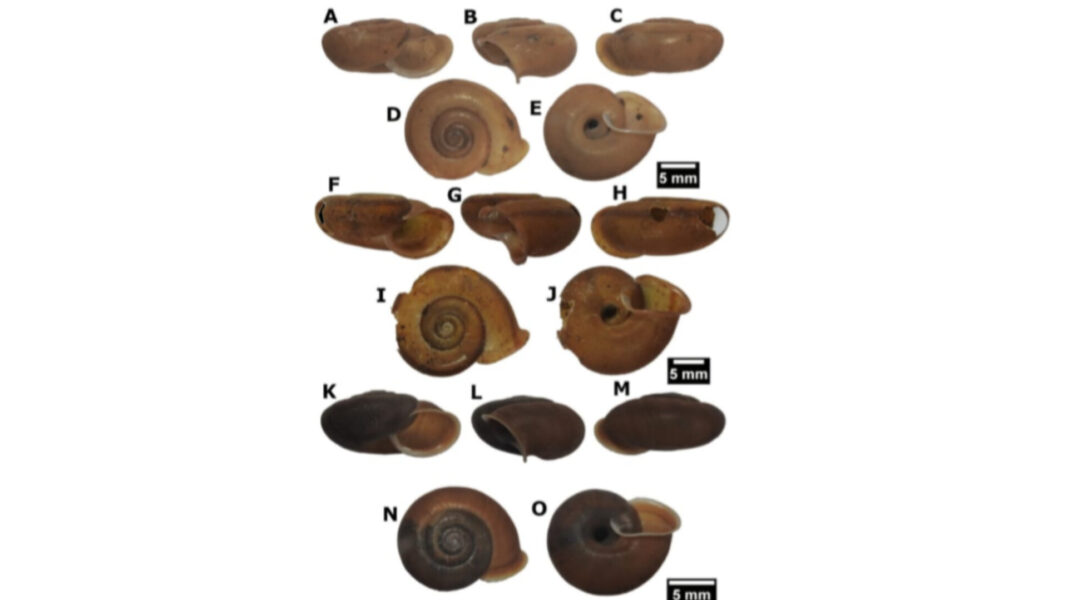Guwahati, July 6: Sometimes good news could also be a bad one.
The booming of tourism at the Lymput cave in East Khasi Hills has become a major threat to a new species of snail identified as Bouchetcamaena subdelibrata, which is also found at the cave.
Scientists from Ashoka Trust for Research in Ecology and the Environment (ATREE) and Kamrup College, Chamata in Assam have found a new record of snail Bouchetcamaena subdelibrata near the Lymput cave in Meghalaya. The scientists associated with the study are N A Aravind from ATREE and Nipu Kumar Das from Kamrup College.

The species belongs to the land snail genus Bouchetcamaena, of the family Camaenidae, and is distributed throughout South and Southeast Asia.
One dry shell of the snail was found near the Lymput cave in Meghalaya.
The snail species was earlier found at Habiang, Garo Hills and South Sylhet Hills.
The specimen was found in the soil-leaf litter near the rocky area. Several other species, such as Cyclophorus sp., Macrochlamys sp., and others, were also recorded from the site during the survey. The sampling site had a soil pH of 8, soil moisture of 1.5, soil temperature of 20.1°C and a humidity of 67%, suggesting their preference for an alkaline and cooler temperature habitat.

Lymput is one of the most popular caves for tourists in Meghalaya. It features a small entrance that opens into a main passage extending about one kilometre westward. This passage, called the “Way to Heaven,” is a challenging and slippery climb. It leads to a series of large chambers adorned with impressive calcite formations. The highlight of the cave is the Mughal Room, a vast chamber measuring over 25 meters in width and height, and 75 meters in length. The entire cave stretches for 6,641 meters.
“The Lymput cave is one of the tourist attractions in Meghalaya. In addition, the region has betel nut plantations, lodge, and other human interventions which may pose threats to these small soil invertebrates,” the scientists from ATREE said.

There have been two more snail species which have been found in new locations. The Bouchetcamaena fusca was for the first time found in Lushai Hills, Mizoram. Its distribution is Gaziphima, Naga Hills, Manipur and Khasi Hills, Meghalaya. On the other hand, Bouchetcamaena delibrata was found in Blue Mountain, Mizoram. The snail is distributed in the Northeast frontier of Bengal (West Bengal); Khasi Hills, Meghalaya; Manipur; and South Sylhet Hills (Bangladesh).
The study said habitats of these species are susceptible to threats such as forest fires, habitat destruction, deforestation, etc., which could have a detrimental impact on their population.
Read: Flood waters threaten to wipe out Assam’s Dokreshwar temple
WATCH:
Find latest news from every corner of Northeast India at hubnetwork.in, your online source for breaking news, video coverage.
Also, Follow us on-
Twitter-twitter.com/nemediahub
Youtube channel- www.youtube.com/@NortheastMediaHub2020
Instagram- www.instagram.com/ne_media_hub





